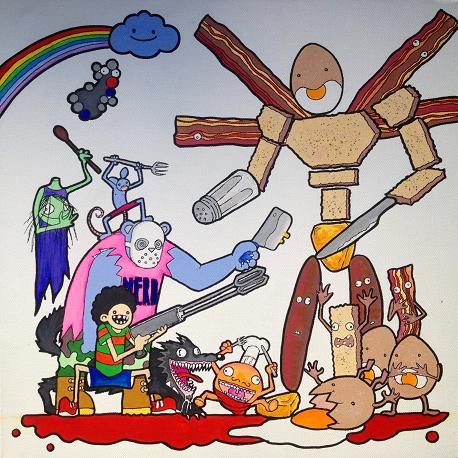[dropcap style=”font-size:100px; color:#992211;”]R[/dropcap]ecent revelations by The Guardian, The New York Times, and Propublica have exposed the lengths to which the NSA and its British counterpart GCHQ went to infiltrate and monitor online gaming platforms including World of Warcraft, Second Life, and Xbox Live.
While the leaks continue to prove the extent to which American spy agencies are willing to circumvent and undercut civil liberties, what is more shocking is just how paranoid and out of touch spy chiefs are to the world of gaming culture.
Surveillance
Much of the NSA report into its surveillance of these massively multiplayer online universes focuses on the ability for terrorists to hide in plain sight, utilizing in-game voice and text chat to communicate securely over long distances. Additionally, the NSA reports noted a worrying chance that terrorists could transfer real-life cash between various operations through the use of in-game markets and trade networks.
Central to the NSA’s case to monitor and infiltrate these online words is the use of the conditional. Terrorists could use these networks. Terrorists could communicate using voice networks built into games like Halo or World of Warcraft. The problem with this line of thought, however, is one that has plagued much of America’s security thinking for more than a decade – the confusion of possibility with probability.
This confusion, along with a fundamental misunderstanding of how games and online worlds operate, has done more to expose the bloated, wasteful, and ineffective practices at the center of America’s surveillance network.
One of the NSA’s first mistakes seems to be the attitude that with enough computing power, the guardians of America’s security can watch over everything. Despite what they have shown so far, this simply isn’t true. At its height, World of Warcraft had over 12 million users spread across thousands of servers around the world. Xbox Live had 48 million subscribers. Steam currently has over 65 million active users.
Trying to police these various realms is impossible, as demonstrated by the fact that the FBI and the CIA had to “deconflict” the various teams running undercover in the gaming worlds – making sure that the agents they sent to collect information weren’t simply spying on one another.
Intelligence monitoring
A bigger issue is that the vast majority of servers and players are based in North America, Europe, and East Asia – hardly terrorist training grounds. Of course, players game in other parts of the world, but there is little to no concrete evidence that terror networks ever used gaming platforms to connect with one another. While the NSA leak mentions that several IP addresses previously targeted for intelligence monitoring have utilized virtual gaming environments, it neglects to take into account the political economy of gaming outside of developed countries.
Many online gamers cannot afford both the computer and the high-speed internet connection to take advantage of online worlds, and they often frequent internet cafes to access their online avatars. These are the same cafes that may be used by students checking Facebook, teenagers watching music videos, or potential terrorists posting to various forums online.
The NSA leak details several “virtual world scenarios” that seem intended to paint the most alarmist scenarios for a government agency with more money than discretion. A sophisticated terrorist network could join online world Second Life and “construct replicas of sites that they are interesting in attacking, and carry out realistic, virtual dry runs of their attacks.”
[quote]Just because a recruit
can clean up in
Call of Duty doesn’t
mean he stands a
chance in the mountains
of Afghanistan[/quote]
Again, government officials have confused what is possible with what is probable, belying a perverse idea of what games are and of what they are capable.
Terrorists
Yes, terrorists could build a virtual world and prepare attacks based on real-world locations, but that preparation has virtually no application in practice. Attempting to build a bomb in a game versus in real life are two very different beasts. Shooting a gun in Counterstrike bears little resemblance to the weight, power, and recoil of an actual weapon, let alone the visceral fear that comes with someone returning fire. Just because a recruit can clean up in Call of Duty doesn’t mean he stands a chance in the mountains of Afghanistan.
If I had poured in the amount of time I spent beating Guitar Hero’s version of Lynyrd Skynyrd’s “Sweet Home Alabama” on expert into a real-life instrument, I might actually be able to play guitar now. But I didn’t, and I can’t.
Another fundamental error in the NSA’s logic is the level of trust they assume exists between online actors. In a world where a 26-year old man can play a female, blood elf paladin, nearly everyone knows that you can’t trust the person behind the screen. In the end, a gamer comes to know another player’s avatar, not the player herself, and only rarely does he or she move beyond that.
The NSA Report
The NSA report states that “Virtual interaction helps team members become familiar and develop trust with their teammates long before they meet face-to-face.” Why, one must ask, would a sophisticated terror network develop trust networks in a world that is, by its very nature, untrustworthy? As anyone who has ever attended a real-life gamer meetup or suffered the world of online dating can attest, oftentimes the individual doesn’t match the avatar.
Finally, if the use of words and phrases such as avatar, guild chat, raids and instances confuses you, it is because gaming has its own particular language and culture, one that the NSA clearly does not understand. In part, this is because one has to organically grow up inside of it.
Second Life
While there are some older people who have slogged through thirty years and more of gaming, most players, even in online realms such as Second Life, still skew younger, and those that are active have gained access to a whole subculture that is not immediately accessible to those outside the system.
This is clear from the dialogue that surrounds video games and violence, where commentators who have often never held a controller pontificate freely on the evils of first-person shooters. Many older career officials, the ones who would green light these surveillance tools, simply have no idea what they are dealing with.
Just look at Charlie Brooker’s attempt to get veteran broadcaster Jon Snow through the cutscene of Lego Avengers. Look at the majority of television sitcoms that have no concept of gaming outside of reductive stereotypes. Gaming culture is to most senior-level career intelligence officers what email was to grandparents fifteen years ago – a new, incomprehensible thing that they didn’t care to take the time to properly understand.
Snowden
This is, in part, how Snowden managed to make off with a still unknown amount of intelligence. He simply knew more about computers and their associated systems than the people who had hired him. Younger people are the same with games. Terrorists are not. In the end, the latest NSA revelations have shown that the government’s surveillance wasted time, money, and effort chasing ghosts.
Are the American people safer for it? Probably not, but the dwarves of Azeroth would like a little privacy, please.
Illustrations by Dan Booth for Trebuchet (not to be reproduced without the illustrator’s prior permission)
Sterling Carter writes on the intersection of political economy, arts and culture, and human rights. He has over five years’ experience on African development, violence and conflict with organizations including Human Rights Watch, Global Witness, and Search for Common Ground. He is originally from Flora, Indiana but pulled up stakes long ago.





















